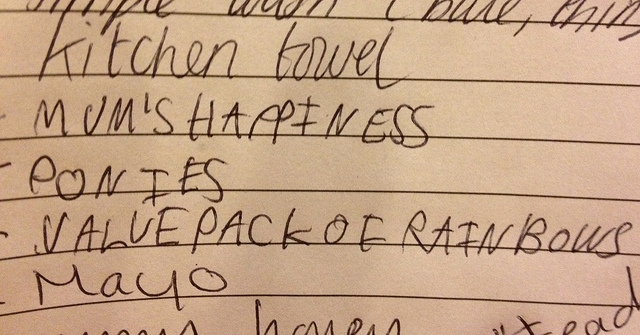As writers in any genre, all too often we find a structure or pattern that works for us and use the form repeatedly.
It makes sense: if our writing is successful when we use a certain form, why wouldn’t we embrace that? In my case, I’ve noticed that I love writing essays with subtitles at the beginning of each section. I’ve found something that’s easy for me to do, so I’ve trusted that it’s always the right thing to do.
That’s all well and good, but when I look at my pieces, they all have a similar appearance on the page. And that’s pretty boring.
So that’s why I wanted to compile this list. I’m most familiar with adopting forms in the creative nonfiction genre, but similar techniques are applicable for fiction writers and poets. We see unique structures in often overlooked pieces of writing as we move through the world on a daily basis. Why not borrow the form and substitute your own content? Here are just a few suggestions of common forms that creative writers can steal for their work.
The Recipe
Our pieces of writing need titles, and the recipe form automatically lends itself to that need. Instead of writing a recipe for chocolate chip cookies, though, maybe it’s a recipe for the perfect date. Or a successful speech. Or it could even be a recipe for a specific person – what truly makes a certain character, and how would the narrator of your piece put that into words?
The additional variety of both a list of ingredients and a set of directions offers even more potential for creative work. The first could act as an introduction, while the second could be shown in scene, or even using cooking terms if you want to really stick to the recipe format.
The How-To Guide
The explanation for this one is simple: we love lists. Think of Buzzfeed articles, like “24 Things Every Minnesotan Will Understand,” or 50 Amazing Movies You’ve Never Seen. Even this blog post. Lists bring order to our disordered world–which is totally relevant with how-to guides if they guide the reader through a seemingly impossible task.
Think of the possibilities, like How to Grieve, or How to Play Video Games, or How to Talk to Yourself. You can look at any task in a new way, especially through the use of humor, image, and original detail. Marcia Aldrich alludes to this form in her essay, “How to Leave a Room”– she doesn’t provide a step-by-step guide, but the title paired with the rest of the content indicates the narrator’s experience of grief and how she wants to remember her mother now that she’s gone.
The Dictionary
A nice way to break up sections in a poem or a piece of prose is to utilize definitions of words that correspond with the major themes in your work. For example, if your content deals with a failing relationship, you might insert definitions of “inevitable,” or “end,” or “miscommunication.”
This structure works for you in two ways:
- You prepare the reader with certain expectations as to what this section or stanza will be about.
- You can get larger abstract words out of the way so that you won’t be tempted to throw them into the bulk of your piece.
The world around us offers a myriad of writing structures just waiting to be used. Next time you’re in a rut, try writing a letter, a series of text messages, or a to-do list, and see where that exercise takes you.
Meet the blogger:
 ALLIE PIKALA is a Creative Writing major at Hamline University, where she will be graduating in May 2016. She primarily writes essays. Her work has appeared in Fulcrum. Allie can also be found playing bass around the Twin Cities in her bands Cadence & the Wolf and With Iowa In Between.
ALLIE PIKALA is a Creative Writing major at Hamline University, where she will be graduating in May 2016. She primarily writes essays. Her work has appeared in Fulcrum. Allie can also be found playing bass around the Twin Cities in her bands Cadence & the Wolf and With Iowa In Between.


